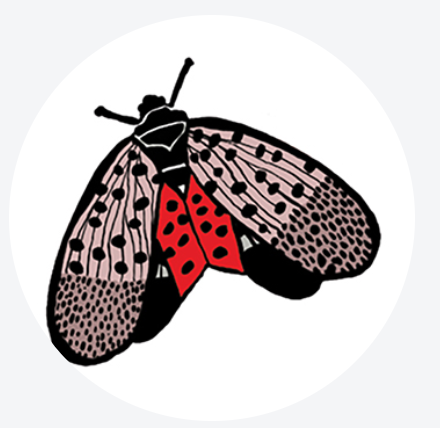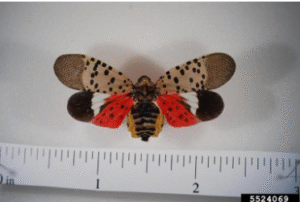
The spotted lanternfly is a non-native, highly invasive species that has steadily moved from the East Coast to Ohio and has now fully infiltrated Franklin County. This incredibly destructive pest eats a wide variety of plants: fruit trees (including grapevines!), hardwoods, pines, and shrubs. We’ve even seen them munching on our annual planters downtown.
How do we get rid of the Spotted Lanternfly?
The SLF does not have any natural predators, so it’s up to humans to do what we can to manage the destruction. They especially like to eat Tree of Heaven (pictured below), so if you can remove this invasive plant from your yard, you’ll help limit its food sources.
When our team sees them on our maintenance routes, we’ll squash as many as we can, so don’t be alarmed if you see an OGI technician swatting and stomping with abandon. We’ve even taken to bringing empty water bottles on our trucks to capture them with this easy hack.
Another helpful tip: wasp or hornet spray is effective for killing SLFs, especially when large numbers gather on a tree. Just be cautious in application: wasp and hornet spray is incredibly toxic and can harm other beneficial insects if overapplied.
Below, we’re sharing some helpful photos of their favored food source (the Tree of Heaven), what lanternflies look like with their wings closed, the nymph (juvenile) stage, and what their egg sacs look like on trees. They start laying eggs in September, so you’ll begin seeing these masses on trees in the next few months. The eggs overwinter and hatch in the spring. If (when!) you notice these gray, mud-like clumps on trees, scrape them into a container with rubbing alcohol or hand sanitizer, seal it, and dispose of it in the trash.
The more people who know how harmful these bugs are, the better chance we have of working together as a community to manage their damage. So if you see one, squash it!
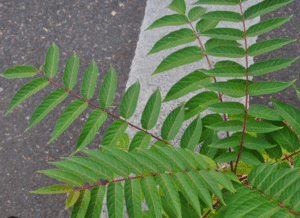
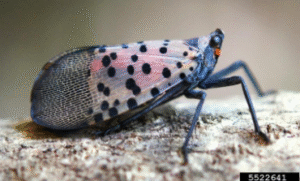
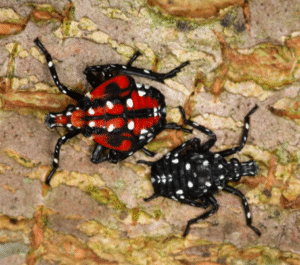
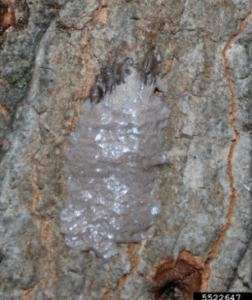
Photo credits: lanternflies.org, OSU CFAES, Tualatin Soil & Water, OSU Extension, Allegheny Front, & OSU Extension via Pennsylvania Department of Agriculture .

